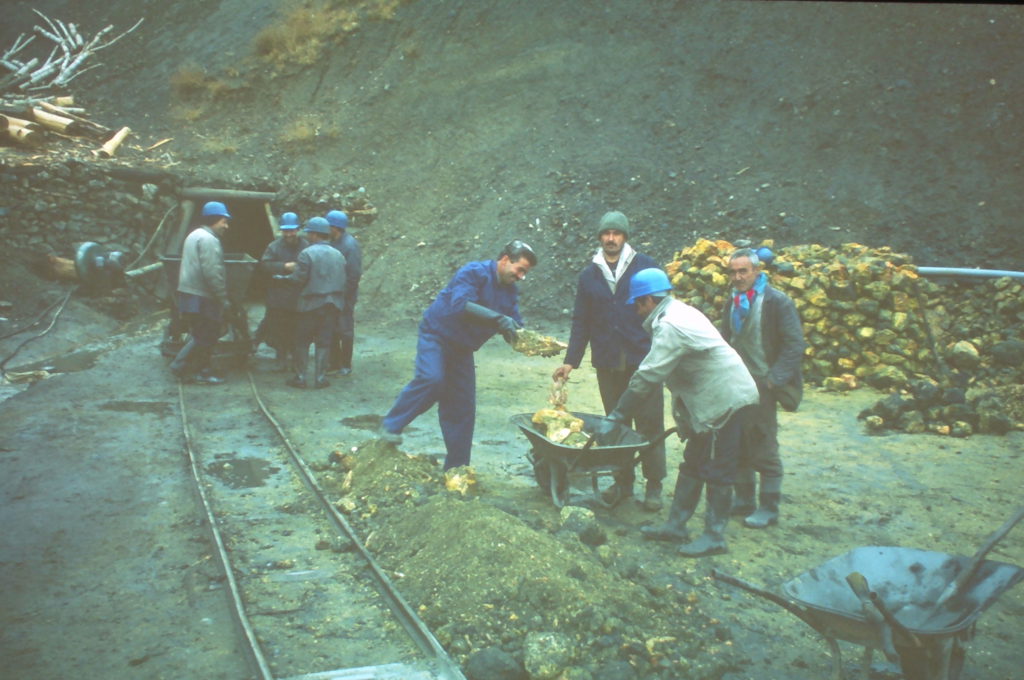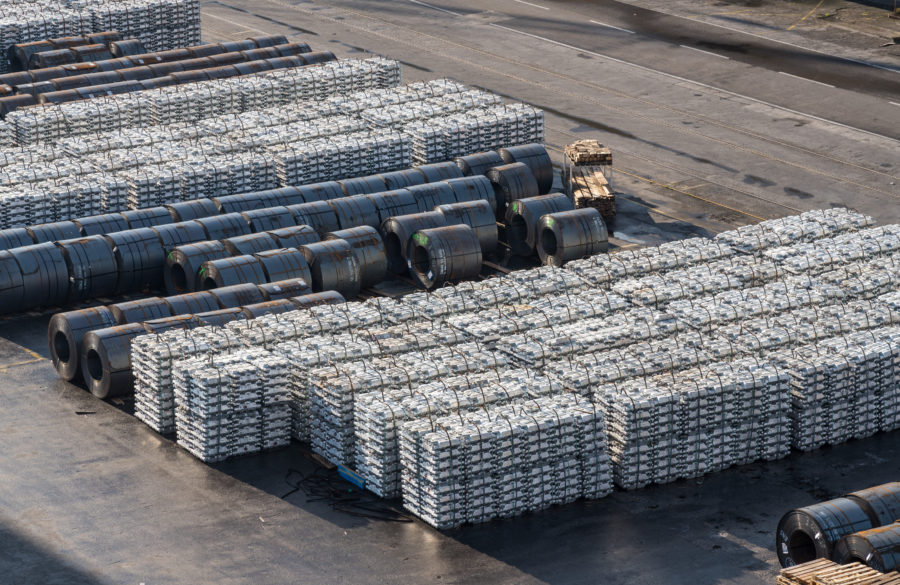Odds ‘n’ Sods: Lies, damn lies, and visual estimates

Ask most professional geologists to define our rocky vocation and they’ll tell you that it’s made up of a large helping of science with a tasty dollop of art slathered on top. To me, that’s why exploration geology is a such lovely discipline. It combines the empirical beauty of observation with the subtlety of multi-disciplinary science.
Like it or not though, our industry often bets the house on one person’s interpretation of what may (or may not) lie beneath our feet. It’s this reliance on gut feel and experience that so often leads to mistakes in exploration programs. But it takes a concerted team effort — or the accumulated errors of a single hapless individual — to get things so badly wrong that a company’s future prospects are screwed. As my old boss used to say, never underestimate the resourcefulness of a geologist hell bent on failure. And visual estimates of the grade of core or rock samples are a sure-fire way of damaging the collective reputation of a team, guaranteeing that the company is never taken seriously again.
Exploration geologists take a lot of samples: drill core, percussion chips, grab samples, chip-channel samples, saw cut channels, stream sediment, run-of-mine ore samples, base of till, soil — the list goes on. If you work in remote locations, you’ll eventually end up collecting a different type of personal sample in a small plastic pot, but that’s for a different article. For all our science and academic learning, geologists always end up digging holes or smashing things. The samples we collect all end up looking look the same: a greyish plastic bag full of muddy grey-brown chunks, sealed with a zip tie, proudly displaying a cryptic sample number that’s going to be the source of all error when the assay data base is found wanting by Dr. QA/QC.
Then we ship them off to assay labs to measure the concentration of whatever elements the company is exploring for. And therein lies the temptation. We’re going to tell someone —someone in senior management — what the grade is because as the project geologist we know the grade, right, ‘cos we understand the project better than anyone else don’t we? It’s one of the easiest ways for a young geologist to book themselves a dark, mouldy spot on the crowded wall of The Mining Hall of Infamy and guarantee a very short, painful career path to geo-obscurity: A quietly whispered number over the phone to management.
Every so often a geologist will go completely off the rails and include a “guess” in their news release at what the grade of said samples might be — yes, the dreaded visual grade estimate. Why would you do something so painfully stupid? Anyone with half a brain should know that in today’s regulatory environment it’s a short cut to the kind of slow professional castration that rarely ends well.
Whether it’s core, or rock chips or a grab, the only certainties are that a) you’re going to be wrong, and b) if you do publish, expect the cold, dead, clammy hand of the securities regulators to come a-knocking on your door asking for a detailed retraction on pain of a jolly good spanking by a nasty person wearing a clown mask. This is followed up by Soviet-style re-education in a classroom gulag supervised by the professional body of whatever jurisdiction you’re in. The Ontario Securities Thingy politely notes in one of their 200-slide technical disclosure guideline presentations that reporting visual estimates of mineralization is “potentially misleading disclosure.” (As an aside, I can only guess what it must be like sitting through one of their information sessions at the PDAC. Hour after slow dragging hour of gripping regulatory guff, delivered through a cacophony of snoring. I’m sure some people find it interesting in the same way a colonoscopy lecture might appeal to a certain kind of medical professional but it ain’t my cup of tea.)
Don’t do it
I digress. However much the regulators bang on about not indulging in visual estimates, the folklore of our business is still awash with anecdotes about nose combers foolish enough to have tried it only to see their careers derailed. Despite the inherent risks, most geologists will try it at some point in their career because they can’t resist. It’s too much fun, and hey, they might be right, which would be brill and all their colleagues would worship them forever. So, to all you newbies out there, here’s some advice: if you feel the urge to try it and you really want to spout on to Dr Johnson PhD in head office about your can’t-miss visual estimates, ask a colleague to slap you half a dozen times before you hit send. DON’T DO IT. IT’S NOT WORTH IT. YOU WILL DIE A THOUSAND LONELY DEATHS.
Over a beer at a reception at the recent Vancouver Resource Investment Conference, a buddy told me how as a junior geologist he ended up having to repeatedly lie to his management team about the project he was drilling. The first time he called in to his boss with a verbal progress report, which included a visual estimate of sulphides and possible grades for a massive sulphide intercept. To his horror, the estimates were “news released” the next day. And the second time too. In the end he started giving them underwhelming estimates, which he knew they wouldn’t publish, to avoid seeing his verbal reports quoted in a company news release and to mitigate the inevitable catastrophe when the assays came back.
Thankfully, like a particularly weird sexual proclivity, when we do try the visual method, most of us keep it to ourselves, nobody gets hurt and the mess is quickly cleaned up. You log the core, and the squeaky voice in the back of your head whispers, “17 grams gold per tonne or I’m a monkey’s uncle.” But what you actually do is write 17 grams gold per tonne on the log sheet with a large question mark to show that — no, you weren’t really serious.
Lucky guess
Undoubtedly, if you’re new to the game, the best way to try it is in the privacy of your own camp, by way of a friendly bet between the geologists, wagering a few bottles of wine or a case of beer when they get back home for whoever gets closest to the actual assay grade. I’ve taken part in Guess-The-Grade beer pools a handful of times. Twice I’ve been lucky enough to be closest to the assay number, and both times the gold grade was about 22 grams per tonne, funny enough. Must be my lucky grade. The first time was at the Golden Bear mine in northern B.C. in the early 1990s. My boss Doug and I spent half an hour sampling the ore piles by the plant; large mounds of sticky black sulphide gouge, scooped up from the open pit and trucked down to the stockpile near the mill to be blended. When we were done sampling, I scraped the mud of the bottom of my boots and bagged it up for assay at the mine lab. I figured my boots had probably collected a rough average grade for that section of the open pit (which was high). Doug and I bet a case of beer on the grade. I plumped for 22 grams per tonne and it turned out to be 22.5 grams gold, so I won.
Sadly, Doug, the old skinflint was so reluctant to pay me my case of beers — a classic case of deep pockets and short arms — that he put my name at the top of the redundancy list when the mine shut down a few weeks later. I did point out to him that the large brown envelope they gave me was suspiciously devoid of a layoff cheque and couldn’t physically hold a case a beer, but to no avail. I’m still waiting. Doug? You there Doug? Come on mate, it’s only 24 beers and I know you’re much richer now…
My second victory was on a project in southern Serbia. I was on the board of directors of a small ExploreCo which was drilling a gold-silver-base metal sulphide system. We had some lovely looking high-grade intercepts full of galena and sphalerite so we knew the silver was going to be high grade, and hoped that the gold might follow suit. One night, over a few ice-cold glasses of the local rakiya — which was delicious in a sado-masochistic tomorrow’s-going-to-hurt sort of way — six of us had a bet on the gold and silver grades of the core sample (pictured).
The wager was a $50 bottle of wine from each of the losers to the lucky winner (me). I came within one decimal place of the actual gold grade and this time, I actually got most of my winnings because nobody in our pool was called Doug. There’s no moral here. All it proves is how talented I am at random guesses.
My puny efforts at random estimation were put to shame years back on a gold project I was working on in Iran. I ran into an émigré Afghan geologist who swore blind that he could accurately tell the gold grade of a rock just by looking at it. He was working for a quasi-government mining company that was trying to muscle in on our gold project.
The company actively mined arsenic as orpiment from the site (the resource ran about 4% arsenic) but had completely overlooked the gold potential of the deposit, which is a Getchell-type sediment hosted gold system. One summer while we were drilling on the coat tails of a dubious legal agreement with the Iranian government, the local company decided to mine the deposit and take it all away because we — the big Westerner company — were clearly very interested in it so it must contain lots of gold.
They had no plan to treat it; they were simply going to take it away before we could mine it. My nemesis had been sent to the project ahead of the haul trucks showing up to figure out the average gold grade for the ore, and in his wisdom he’d decided that assays weren’t necessary. I found him standing on a large pile of rock sticking in little red coloured flags here and there. He’d written numbers on the flags. Curious, I asked what he was doing and he told me that the numbers were the gold grades for each pile, which he could tell simply by looking at the ore. I diplomatically told him that based on my years of mining and exploration experience he was naive idiot for thinking he could guess sample grades better than an assay lab. Undeterred he ploughed onward, constructing an attractive rock garden of red flags blowing in the arsenic-laden breeze.
A few weeks later some trucks and a digger showed up and removed 40-50 truck loads of high-arsenic rock, which they promptly dumped in a marshy field at the head waters of a small stream that the local village got its water from and used to feed a trout farm. My key takeaway from the encounter was never under any circumstances have a heated argument with a dogmatic Afghan who’s holding a rock hammer. I learned that there’s a good reason the Brits left Afghanistan back in the day and it has nothing to do with visual grade estimation.
—Ralph Rushton is a geologist and has worked at mines and exploration projects around the world including stints in South Africa, Turkey, Bulgaria, Yemen, Iran and Pakistan. He is currently the president of Aftermath Silver, a silver development company with projects in Chile and Peru. In his spare time, he writes about mining and exploration for his popular blog, urbancrows.com.
More News
China’s mining investment under Belt and Road Initiative sets new record – report
China's overseas mining investment under its Belt and Road Initiative hit another peak last year at $21.4 billion.
March 29, 2025 | 10:26 pm
Column: Europe’s future metals strategy hindered by current crisis
Chinese over-capacity and high energy prices have accelerated the long-term decline of European steel and aluminum production.
March 29, 2025 | 02:25 pm
{{ commodity.name }}
{{ post.title }}
{{ post.excerpt }}
{{ post.date }}



Comments